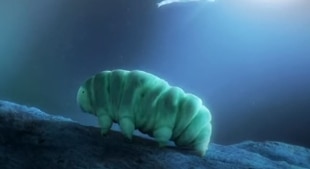Share
March 10, 2021
Four new species of tardigrades, tiny and largely mysterious organisms, capable of living in extreme conditions, have been discovered by an international research group coordinated by the University of Modena and Reggio Emilia (Unimore) in collaboration with a Swedish university .
One such species was named after activist Greta Thunberg.
The discovery - published in Scientific Reports - took place during a study in the Unesco Biosphere of Kristianstads Vattenrike, in southern Sweden.
"We have decided to dedicate one of these species 'Xerobiotus gretae' to climate activist Greta Thunberg - explain from Unimore - for the courage, tenacity and efforts to open the eyes of world leaders to the need to act against climate change. . Greta Thunberg's findings give us hope that the challenges of changing the unsustainable path of human societies are still possible, just as small tardigrades are capable of overcoming seemingly impossible environmental challenges. "
Referred to as the "toughest animals on Earth", tardigrades are no larger than a millimeter, visible only under a microscope.
They are also called 'water bears' due to their appearance of small eight-legged bears.
They can be found all over the world, sea, moss, lichen, deserts, Arctic and Antarctica.
In recent years they have acquired interest thanks to their ability to dry out, called 'anhydrobiosis', and become active again once water is available in the environment in which they live.
They can remain in the dry state for years, suspend their metabolism and become capable of withstanding extreme environmental conditions.
The study of their capabilities could make it possible to exploit their extraordinary properties in technological applications for the conservation of cells, organs and vaccines in a dry state for long periods.
The first author of the study was Unimore researcher Edoardo Massa, who dedicated another of the species discovered, 'Mesobiotus emiliae', to his centennial grandmother.
Signatories include Swede Ingemar Jönsson of the University of Kristianstad, who first exposed tardigrades to space vacuum during a European Space Agency mission.

